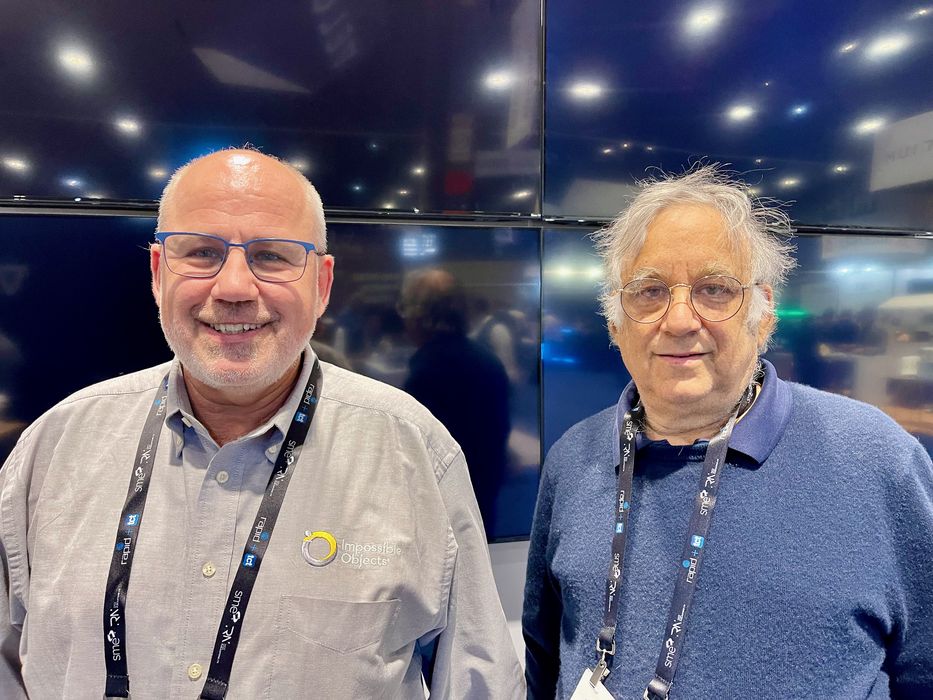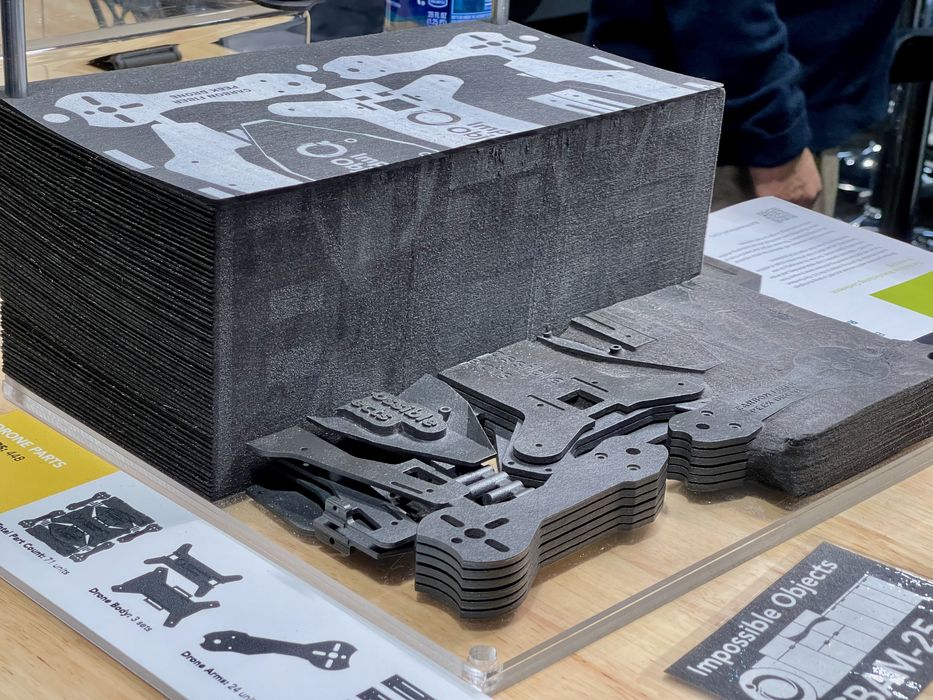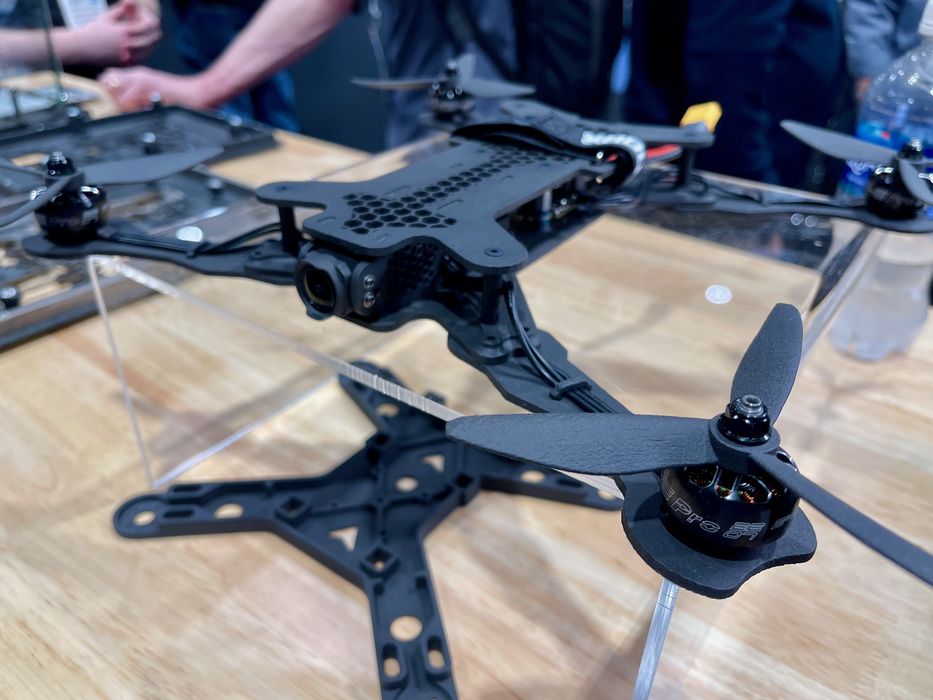
We spoke with the leaders of Impossible Objects and learned that they have big plans for the future.
The company was founded several years ago by inventor Robert Schwartz, who developed their unique “CBAM” 3D printing process.
The CBAM Process: A Unique 3D Printing Method

The CBAM process is quite an unusual process that’s very different from other methods. It uses sheets of strong composite materials, such as fiberglass or carbon fiber. These sheets are fed into the print chamber, where a fluid is selectively dropped by high-speed inkjets onto the sheet. A polymer powder is spread, and it adheres to the wet portions of the sheet. Another sheet is laid on top, and the process repeats.
At the conclusion of the job, the block of sheets is pressed and heated, fusing the layers together. A final step involves removing the “dry” portions of the layers to reveal the completed object.

The CBAM process is able to produce extremely strong parts because each layer is literally made of composite material. It’s also able to operate very rapidly because of the high-speed inkjet printheads. Recently, Impossible Objects announced their latest machine, the CBAM-25, which is said to run around 15X faster than typical production 3D printers.
High-Speed Inkjet Print Heads: The Key to CBAM’s Rapid Operation
They’re also able to use high-temperature polymers like PEEK, enabling the ability to produce thermally resistant strong parts.
We spoke with Steve Hoover, the CEO of Impossible Objects. Hoover has an interesting past life, as he is the former CEO of Xerox, where he was deeply involved in the development of the high-speed inkjet print heads that happen to be used by Impossible Objects.
The inkjet system is impressive. Hoover explained that they are able to resolve 1200 dpi, or 0.021mm. This allows CBAM to produce highly detailed prints. The inkjets are organized into 20,000 nozzles per each 18-inch print head.
Impossible Objects Future Outlook
These inkjets are the key to the high speed of the CBAM process, as they were specifically designed for rapid operation. But as fast as the CBAM-25 machine already is, Hoover has more plans for the future. He said, “This is not the end, it is the start.”
In other words, Impossible Objects intends to develop future versions of CBAM that could print objects at much higher speeds, if that can be envisioned. How fast can these systems go? It’s not clear. Hoover didn’t tell us, but he did have a smile and that tells me we could be in for a surprise.
Where is this heading? Clearly, Impossible Objects is targeting production environments. As you can see in the sample drone print images above, it’s possible to stack huge numbers of parts within a print job. By producing blocks of parts at ever-increasing speeds, large quantities of parts can be efficiently produced.
That efficiency will be attractive to manufacturers: their investment in a machine that can produce more parts per week makes sense. A machine that can print twice as fast, for example, is equivalent to buying two machines. That would reduce the capital cost for that production scenario by half.
This is where I think Impossible Objects is heading: to produce a system capable of producing large numbers of parts at an efficient cost. That will not only enable their sales to increase but also enable new 3D print applications that previously weren’t financially feasible.
